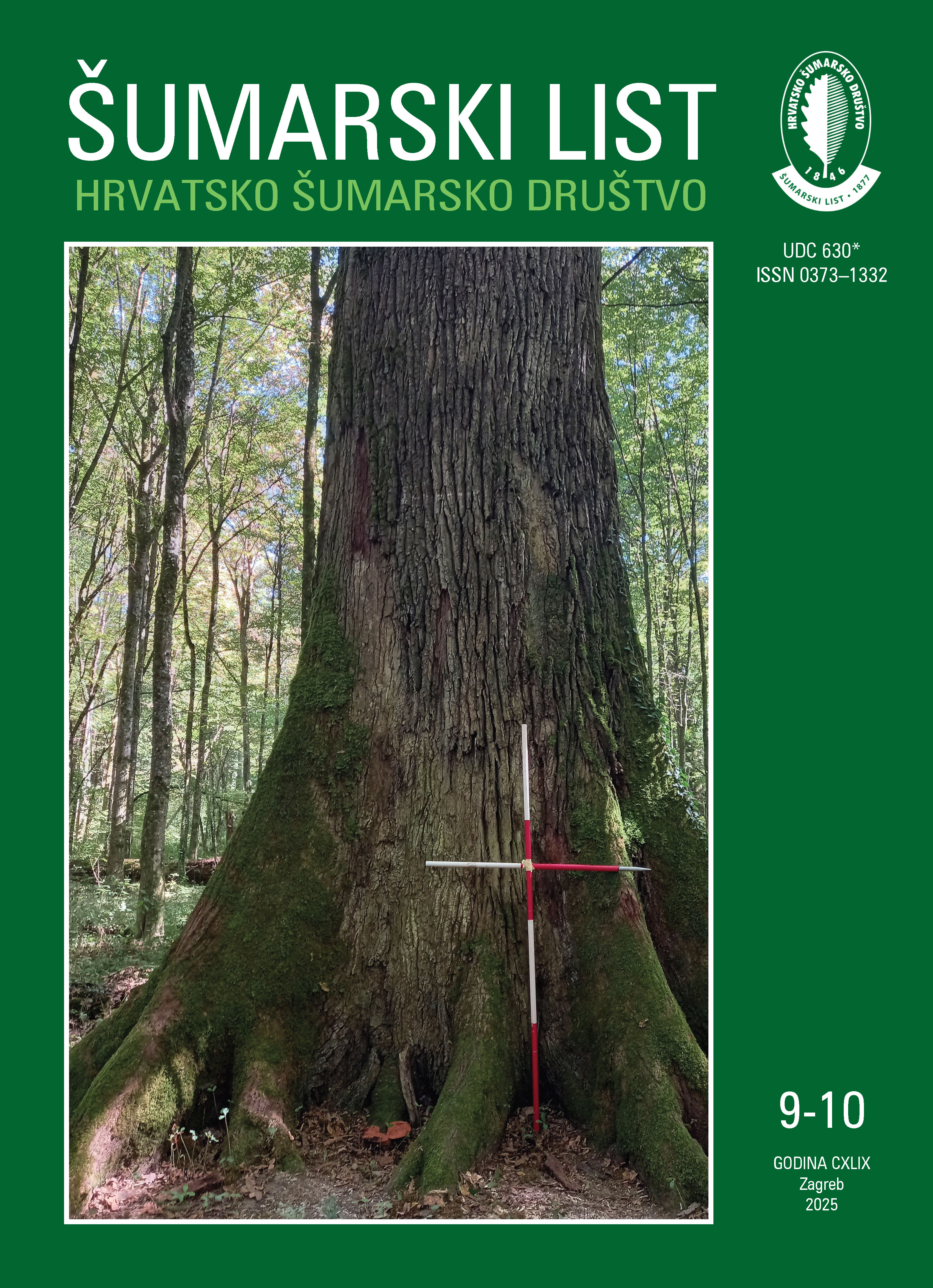Proizvodnost harvestera s trakcijsko-sidrenim užetom: studija slučaja u Zapadnom Oregonu, SAD
Ključne riječi:
Privezani kombajn, strmi tereni, proučavanje vremena i kretanja, produktivnostSažetak
Upotreba strojne sječe harvesterima sa trakcijsko-sidrenim užetom povećava se na sjeverozapadu SAD-a posljednih godina. Ovo istraživanje provedeno je pri čistoj sječi sastojine duglazije oštećene olujom na području Oregona, SAD. U studiji rada i vremena snimanje rada harvestera podijeljeno je u 4 faze: kretanje vozila, priprema za sječu, sječa te izrada. Prekidi rada nisu snimani. Prosječna prozvodnost iznosila je 40 m3/sat, u rasponu od 16-75,02 m3/sat. Statistička analiza potvrdila je prijašnja saznanja o tome kako visina stabla, prsni promjer te volumen stabla najviše utječu na proizvodnost harvestera.
Preuzimanja
Objavljeno
Broj časopisa
Rubrika
Kategorije
Licenca
Autorska prava (c) 2025 Neşe Gülci, John Sessions, Presston Green

This work is licensed under a KreativniCommons Attribution-NonCommercial Međunarodne licence.


